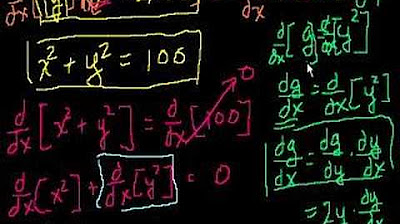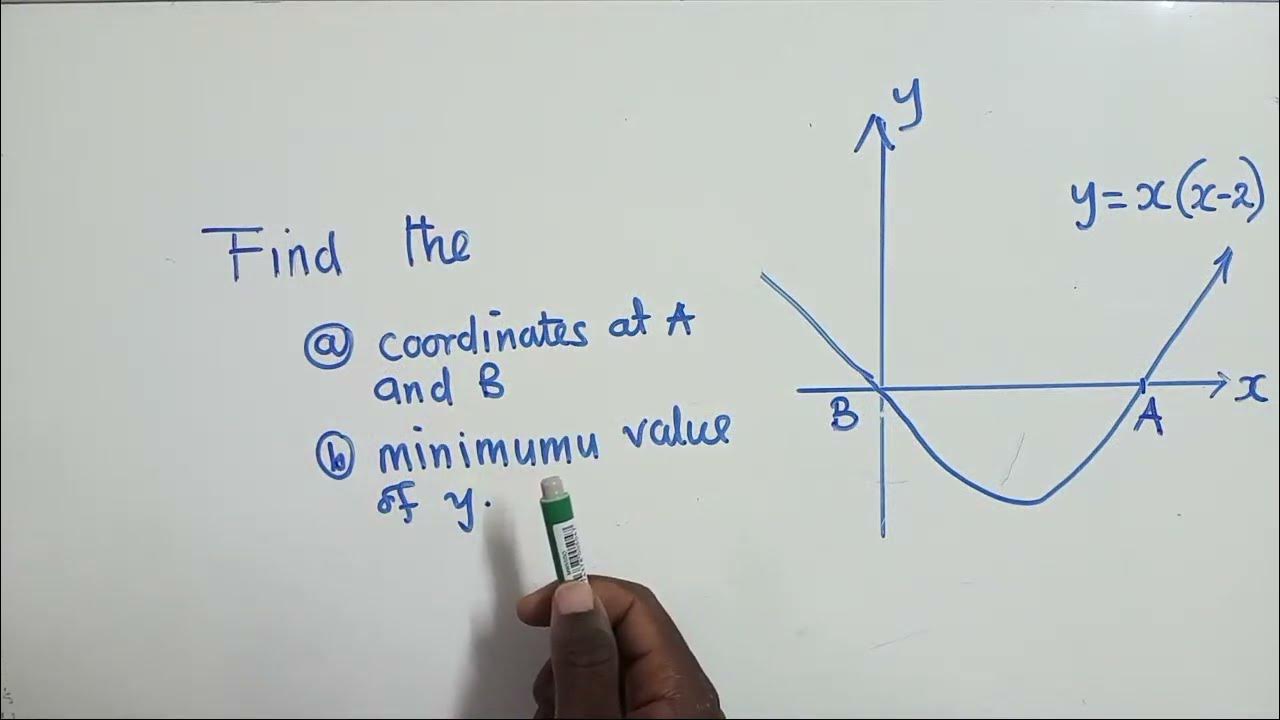An Interesting Olympiad Problem With Factorials
TLDRIn this educational video, the host tackles an intriguing equation with integer solutions: x^2 - y! = 2001, where x and y are integers and y! denotes y factorial. The video explores the use of modular arithmetic as a strategy to solve such non-standard Diophantine equations. Focusing on mod 9, the host demonstrates that y must be less than or equal to 5 to avoid a contradiction. Through testing values, the video concludes that the only integer solutions occur when y = 4, yielding x = ±45. The host encourages viewers to engage by sharing their thoughts and subscribing for more mathematical content.
Takeaways
- 🧩 The video discusses solving an equation with integer solutions: \( x^2 - y! = 2001 \), where \( x \) and \( y \) are integers and \( y! \) denotes the factorial of \( y \).
- 📚 The problem likely originated from a math contest in 2001, but the exact source is not specified.
- 🔍 The equation is non-standard because it involves a quadratic function of \( x \) and a discrete function like \( y! \).
- 🔢 Since \( y \) cannot be negative, the video focuses on integer solutions for \( x \) and \( y \).
- 🛠 One of the main strategies for solving such equations, known as Diophantine equations, is using modular arithmetic.
- 🔑 Modular arithmetic can be used to test for solutions by checking the equation modulo various numbers like 3, 5, 9, etc.
- 📉 The video uses mod 9 to simplify the problem because factorials of numbers greater than 5 end in zero and are divisible by 9.
- 📌 It's noted that if \( y \) is greater than 5, then \( y! \) will always be divisible by 9, which simplifies the equation to \( x^2 \equiv 3 \mod 9 \).
- 🔍 Testing squares modulo 9 reveals that no integer \( x \) can satisfy \( x^2 \equiv 3 \mod 9 \), indicating no solutions for \( y > 5 \).
- 🚫 The video concludes that \( y \) must be less than or equal to 5 to find a solution.
- 🎯 Testing \( y = 4 \) yields a solution: \( x^2 = 2025 \), which is \( 45^2 \), providing the integer solutions \( x = 45 \) and \( x = -45 \).
- 📝 The final solution to the equation is presented as the ordered pairs \( (45, 4) \) and \( (-45, 4) \).
Q & A
What type of equation is being solved in the video?
-The video is solving a non-standard equation of the form x^2 - y! = 2001, where x and y are integers and y! denotes the factorial of y.
Why is the problem considered non-standard?
-The problem is non-standard because it involves a quadratic function (x^2) and a discrete function (y factorial), which are typically not combined in standard equations.
What is the significance of the year 2001 in this context?
-The year 2001 is significant because the equation is set to equal 2001, and the problem likely appeared in a math contest during that year.
What mathematical tool is suggested for solving such equations?
-Modular arithmetic is suggested as one of the best tools for solving these types of equations, particularly when they are called diophantine equations.
Why is modular arithmetic useful in this context?
-Modular arithmetic is useful because if the equation has no solutions modulo a certain number, it generally has no solutions, allowing for the elimination of potential solutions early on.
What is the first step in solving the equation using modular arithmetic?
-The first step is to find a suitable modulus to test the equation. In this case, the modulus chosen is 9.
Why is the modulus 9 chosen for this problem?
-The modulus 9 is chosen because any factorial greater than 5 ends in a zero, making it divisible by 9, which simplifies the equation and allows for easier testing of potential solutions.
What is the result of applying the modulus 9 to the equation?
-Applying the modulus 9 to the equation x^2 - y! = 2001 results in x^2 ≡ 3 (mod 9), since the sum of the digits of 2001 is 3.
How does the video determine that y must be less than or equal to 5?
-The video determines that y must be less than or equal to 5 by showing that if y were greater than 5, y! would always be divisible by 9, which would not allow x^2 to be congruent to 3 mod 9.
What is the final solution for the equation given y = 4?
-The final solution for the equation when y = 4 is x = ±45, as 2025, which is the result of 4! + 2001, is a perfect square and equals 45^2.
How does the video presenter quickly identify that 2025 is a perfect square?
-The presenter uses a shortcut for two or more digit numbers ending in 5: taking the tens digit, adding 1 to it, and then multiplying by the tens digit itself, followed by appending 25 to get the square.
What is the conclusion of the video regarding the integer solutions for the equation?
-The conclusion is that the only integer solutions for the given equation are x = ±45 when y = 4, as no other values of y less than or equal to 5 yield integer solutions.
Outlines
🔍 Solving Integer Equations with Modular Arithmetic
This paragraph introduces a math problem involving finding integer solutions for the equation x^2 - y! = 2001, where '!' denotes factorial. The video aims to solve this non-standard equation using modular arithmetic, a technique that can simplify the search for solutions by testing the equation under different modulo values. The speaker suggests starting with modulo 3 or 5 but chooses modulo 9 for the demonstration. The equation's properties and the significance of y factorial's divisibility by 10 for y greater than 5 are discussed. The goal is to reduce the equation to a single variable and find when x^2 ≡ 3 (mod 9), showing that no integer solutions exist for y > 5 and setting a boundary for further testing.
📉 Testing Values and Finding the Solution
The second paragraph continues the problem-solving process by testing different values of y to find integer solutions for the given equation. The speaker explains that for y greater than 5, y factorial will be divisible by 9, which simplifies the equation to x^2 ≡ 3 (mod 9). However, it's shown that no integer x satisfies this condition under modulo 9, indicating no solutions for y > 5. The focus then shifts to testing y values less than or equal to 5. The speaker finds that when y = 4, the equation simplifies to x^2 = 2025, which is a perfect square (45^2), yielding two integer solutions: x = 45 and x = -45. The paragraph concludes with the ordered pair solutions (45, 4) and (-45, 4) and ends the video with a thank you note, encouraging viewers to comment, like, and subscribe.
Mindmap
Keywords
💡Equation
💡Integer Solutions
💡Factorial
💡Modular Arithmetic
💡Divisibility
💡Diophantine Equations
💡Mod
💡Square Numbers
💡Perfect Square
💡Ordered Pairs
Highlights
The video discusses solving an equation with integer solutions: x^2 - y! = 2001, where x and y are integers and y cannot be negative.
The problem likely appeared in a 2001 math contest, but the exact source is not specified.
The equation is non-standard due to the presence of a quadratic function (x^2) and a discrete function (y!).
Modular arithmetic is introduced as a key tool for solving such equations, known as Diophantine equations.
The video suggests starting with mod 3 or mod 5 to reduce the equation and find integer solutions.
For y greater than 5, y! will always be divisible by 9, which is used to simplify the equation.
The equation is simplified using mod 9, aiming to find x such that x^2 ≡ 3 (mod 9).
Testing squares of integers mod 9 reveals that x^2 will never be congruent to 3 mod 9, indicating no solutions for y > 5.
The boundary for y is established as less than or equal to 5 based on modular arithmetic.
Testing y = 5 shows that x^2 does not equal a perfect square, thus no solution exists for y = 5.
For y = 4, the equation simplifies to x^2 = 2025, which is a perfect square (45^2), yielding two integer solutions: x = 45 and x = -45.
A shortcut for quickly determining perfect squares ending in 5 is shared.
Testing other values for y does not yield any additional solutions.
The only integer solutions to the equation are x = ±45 when y = 4.
The video concludes with the ordered pair solutions (45, 4) and (-45, 4).
The presenter encourages viewers to like, comment, and subscribe for more content.
Transcripts
5.0 / 5 (0 votes)
Thanks for rating:





